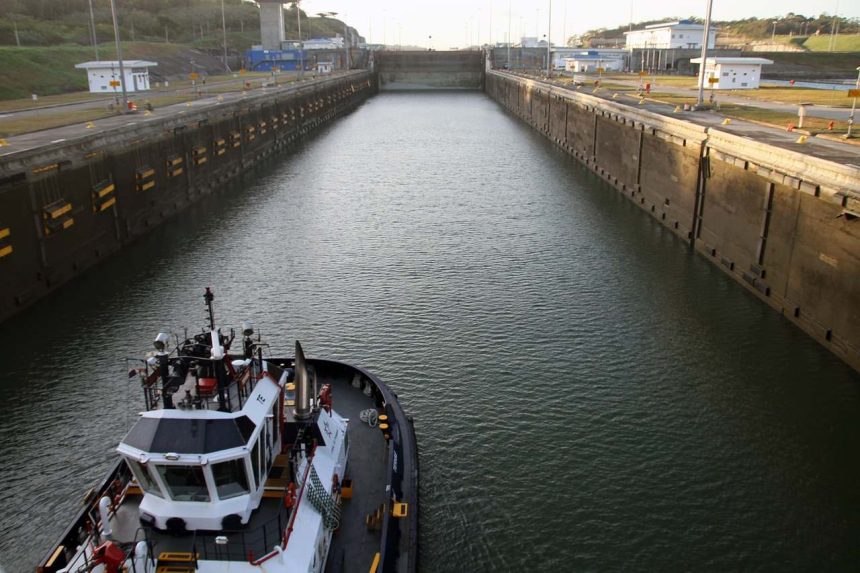The Panama Canal and the Suez Canal are two of the most renowned artificial waterways in the world, each serving as critical links for global maritime trade. Among them, the Panama Canal stands out as particularly important due to its strategic role in connecting the Atlantic and Pacific Oceans, thereby significantly reducing the travel distance for ships.
The Strategic Importance of the Panama Canal
Stretching approximately 82 km (51 miles), the Panama Canal is a vital inter-oceanic waterway under the control and operation of the United States. It plays a crucial role in maritime navigation by shortening the distance between the eastern and western coasts of the United States by a staggering 8,000 nautical miles. Ships using the canal to travel between North America and the ports on the opposite side of South America can save around 3,500 miles. Furthermore, vessels heading to Europe, East Asia, and Australia can cut down their journey by approximately 2,000 miles, leading to substantial savings in both fuel and time.
Engineering Marvel: The Locks and Channels of the Panama Canal
The Panama Canal is a feat of engineering, featuring two small sea-level sections at either end, and three pairs of locks that raise ships to a height of 26 meters above sea level. These locks are an integral part of the canal’s structure, totaling 12 locks, including the pairs on both sides. The canal also includes a 32-mile-long elevated section that encompasses Gatun Lake and an eight-mile-long channel known as the Gaillard Cut.
The lock chambers are an impressive 1,000 feet long, 110 feet wide, and 41 feet deep, allowing most merchant and navy ships to pass through with ease. However, larger vessels face limitations due to the canal’s dimensions. The locks are powered by gravity, with water flowing from Gatun Lake to Madden Lake. Each lock has two gates that are 65 feet wide and 7 feet thick, capable of reaching heights between 47 and 82 feet, and they are operated by motors controlled from a central tower.
Time Efficiency and Traffic Through the Canal
The Panama Canal not only saves distance but also time. On average, it takes about 15 hours for a ship to cross the canal, including the waiting period. Once the ship receives clearance, the actual crossing time is reduced to around 7 or 8 hours. The canal has seen a dramatic increase in traffic since its inception. In 1916, only 807 ships passed through, but by 1970, this number had surged to 15,523, with these ships carrying approximately 132,500,000 tons of goods. The Panama Canal Company is responsible for the control, operation, maintenance, and trade of the canal.
The Fascinating History of the Panama Canal
The construction of the Panama Canal is a story filled with ambition, failure, and eventual success. The idea of building the canal was first conceived by the Spanish in the 16th century. In 1846, the United States and Colombia signed an agreement for its construction, leading to the creation of the Panama Railway in 1855.
In 1880, the French Panama Canal Company was established under the leadership of Ferdinand de Lesseps, who had successfully overseen the construction of the Suez Canal. However, the project soon ran into significant challenges, including poor planning, difficult terrain, and outbreaks of diseases like yellow fever, malaria, and cholera. These issues led to the company’s bankruptcy, halting construction within a decade.
A new Panama Canal Company was formed in 1894, but progress was slow due to financial constraints. The situation changed in 1903 when Panama gained independence from Colombia, and an agreement was signed with the United States, transferring responsibility for the canal’s construction to the U.S. With renewed vigor, construction resumed in 1904, and by August 15, 1914, the Panama Canal was officially opened to maritime traffic.
Future Prospects and Expansion
As global maritime traffic continues to grow, the Panama Canal faces challenges, particularly the inability of larger ships to pass through its locks. To address this, plans are being considered for the construction of a larger waterway to accommodate modern vessels. By December 31, 1999, the state of Panama is expected to take full control of the Panama Canal from the United States, marking a new chapter in the history of this remarkable engineering marvel.




